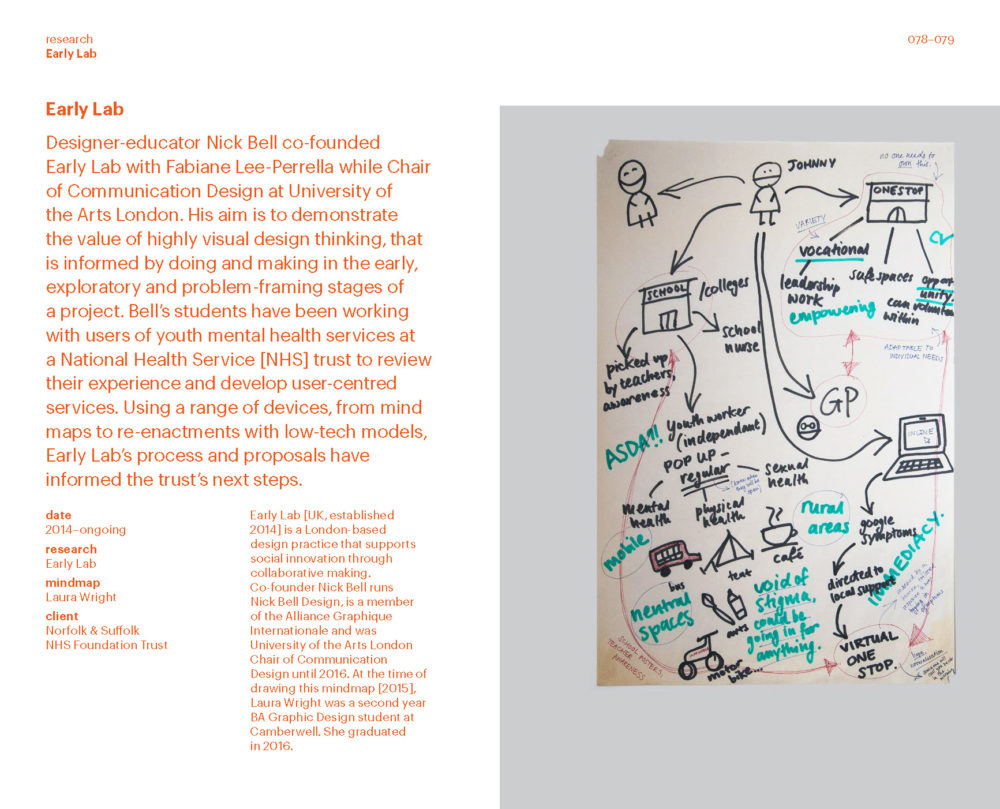Can graphic design save your life?
A text by Nick Bell published in a book by GraphicDesign& to accompany the exhibition Can Graphic Design Save Your Life? Wellcome Collection, London: 7 Sept 2017 to 14 Jan 2018.
Can graphic design save your life?
You save lives by making life worth living, by making a world all kinds of people can see a future for themselves in.
Making a world that nurtures everyone’s very different aspirations is however enormously difficult to achieve. This is partly because public institutions are configured to respond to crises after the event. For example, health services are deployed primarily after a person becomes unwell; justice is meted out primarily after a crime has been committed; rehabilitation and reconciliation are advocated primarily after sentencing; public enquiries get commissioned primarily after a disaster.
Traditionally, the discipline of design has conformed to this after-the-event model. In this service mode, it is as if there would be no design to do if there were no client briefs to answer, so fixated and dependent have designers been on the ‘solving’ of ‘problems’ framed by a commissioner as their source of purpose. Times are changing though. Design is in the process of becoming much more than the practice, called upon to iron out the glitches, that renders smooth passage for business-as-usual.
Design is no longer limited by the so-called solving of so-called problems: what has come to be known as the execution of short-term fixes. Design is also imagination, long-term vision and through emergence, transformation. Design is becoming more about the creation of futures everyone can see them self in.
This is an aspiration that will not be achievable though if designers are not members of a broad trans-disciplinary community embedded in a system instituted to act before events. After all, events are merely surface symptoms of a deeper reality. Designers, together with practitioners from many other fields of practice – whether arcane or everyday, industrial or domestic – must advocate preventative behaviours whilst engaging in the deeper reality. For example, health services so a person is less likely to become ill; justice, rehabilitation and reconciliation so a crime is less likely to be committed; public policy and regulatory protections so a disaster is less likely to happen.
This trans-disciplinary thinking and doing, (that needs to be taking place a lot more if preventative action is to be committed to far enough in advance of potential crises), is less likely to materialise without design. Design is more than just a discipline. It is a meta-discipline: a source of integration for all other fields of practice.
Can graphic design save your life? Yes, it can, but not by itself. No single domain of expertise can, not even medicine. It would be hubris for any one field of practice to make that claim. With everyone working together though, in cooperation despite all our differences (or rather, because of them), there is a better chance that it can.
Can graphic design save your life? An exhibition about the relationship between health and graphic design at the Wellcome Collection, Euston Road, London.


